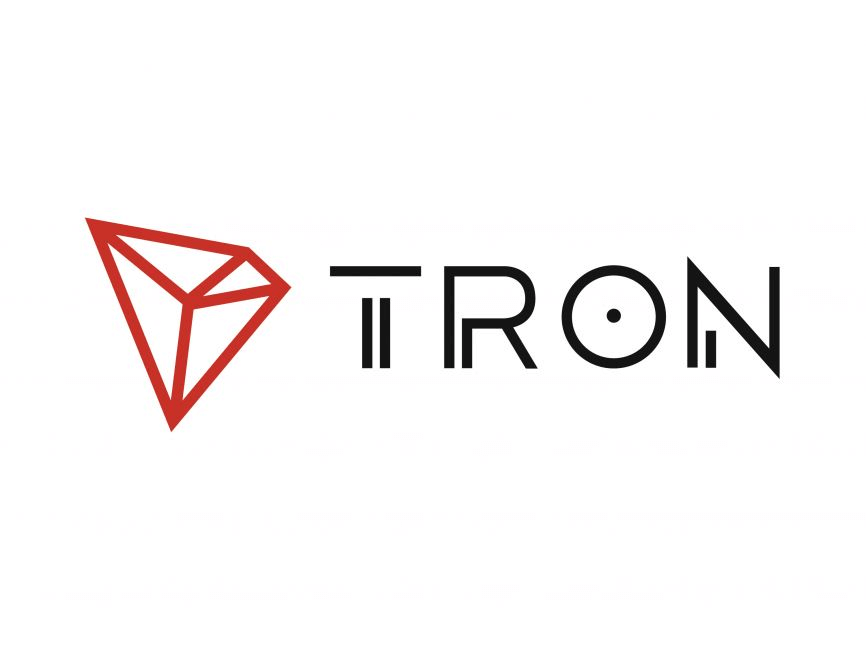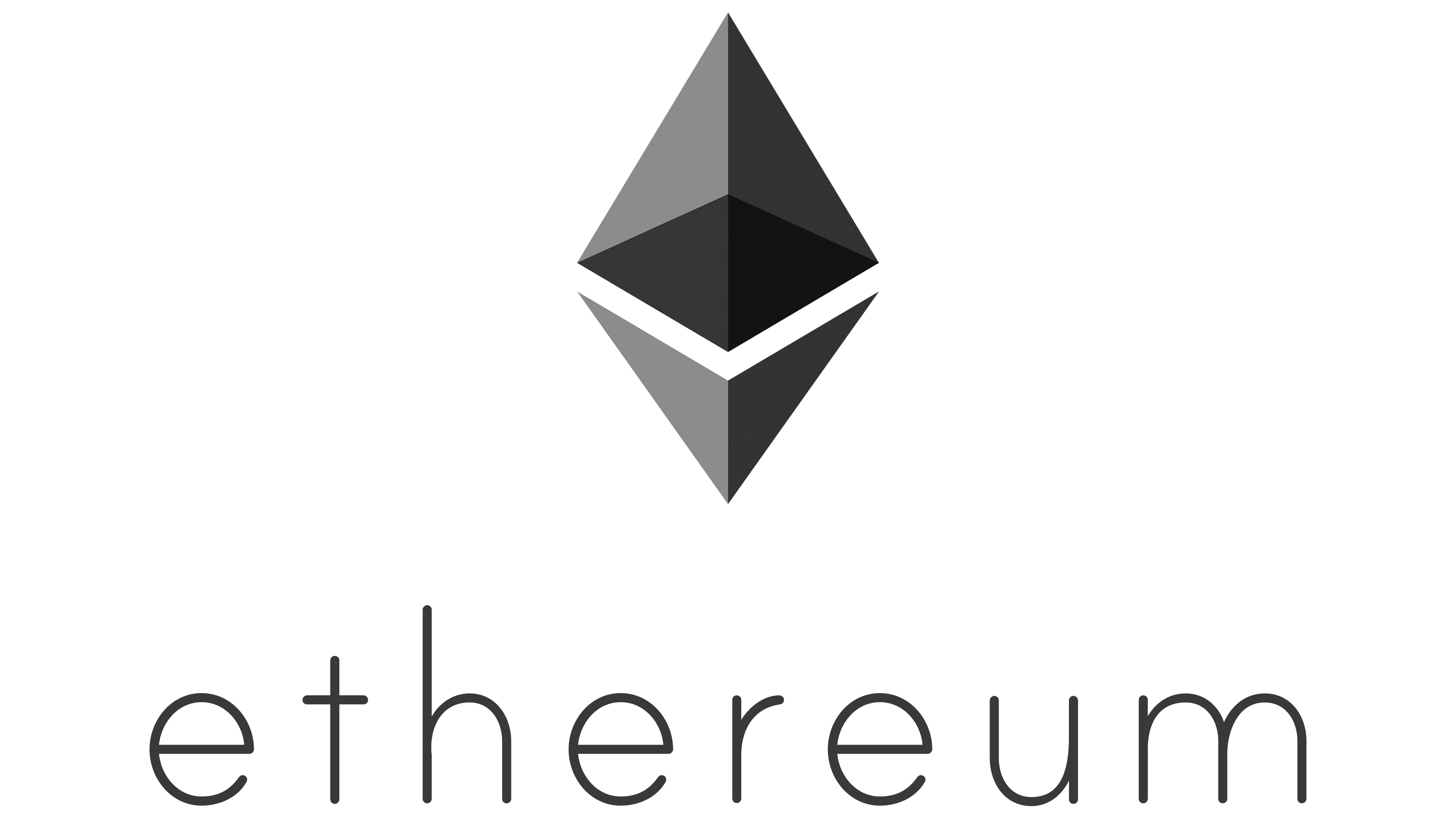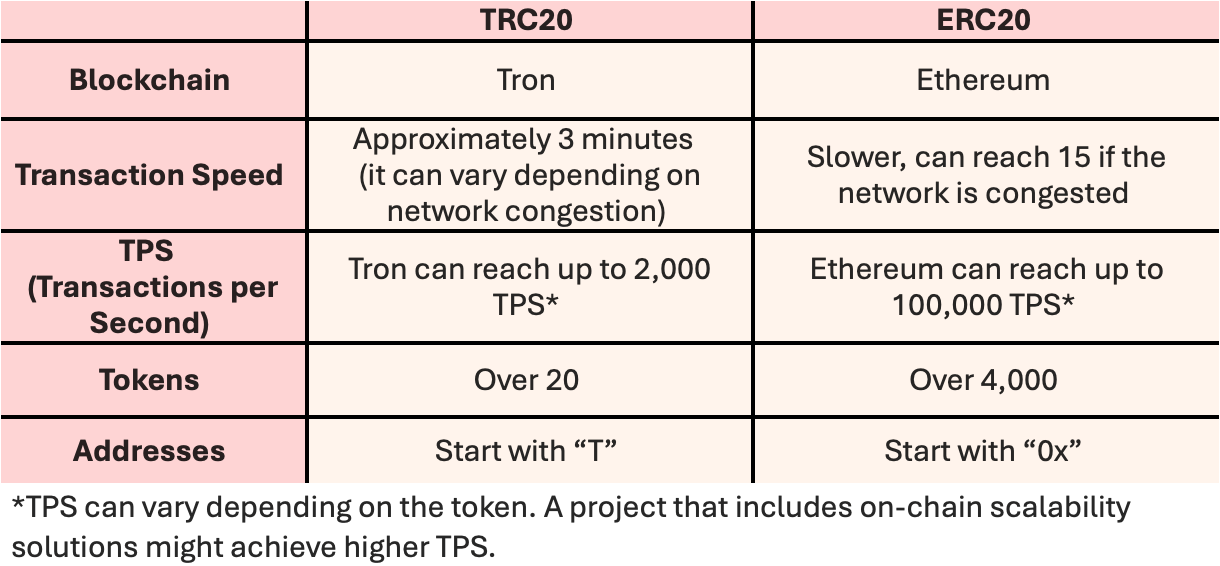The world of cryptocurrencies has advanced significantly, providing an impressive array of over thousands of digital tokens for selection. Each token offers unique advantages and applications. As the crypto community expands, so does the underlying technology, continuously evolving to support its progression.
In the vibrant world of cryptocurrencies, ERC20 and TRC20 are two highly adopted token standards. Let’s delve into what makes them so favored in the crypto industry and explore their key differences.
As a researcher in this field, I’m excited to delve into the intricacies of TRC20 and ERC20 together. In this article, we will unravel the essential distinctions between these two token standards, gain insights into how tokens engage with smart contracts, and assess their broader implications for the dynamic crypto ecosystem.
For both experienced traders and newcomers in the digital currency sector, familiarizing yourself with various token standards is crucial for optimally handling cryptocurrencies.
What Is TRC20?

As a researcher studying the Tron blockchain, I can tell you that TRC20 is a significant token standard utilized for building and implementing smart contracts on this platform. This protocol plays a crucial role in supporting numerous digital tokens within the Tron network, which distinguishes itself through its impressive transaction speed and affordable fees. Essentially, TRC20 acts as the backbone of the Tron network, similar to ERC20’s function within the Ethereum network, enabling the effortless creation and administration of tokens.
The TRC20 standard facilitates seamless interoperability between various tokens and decentralized applications (dApps) on the Tron blockchain. It offers developers a well-defined framework comprised of essential guidelines and features, including transferring tokens, retrieving token balances, regulating token supply, and engaging with other tokens. By conforming to these specifications, tokens can smoothly function within the Tron network, enabling intricate transactions and continuous communication with other smart contracts and tokens.
TRC20 tokens typically function through the Tron Virtual Machine (TVM), which shares many characteristics with the Ethereum Virtual Machine (EVM) that we’re accustomed to. This resemblance enables developers who are proficient in Ethereum’s Solidity programming language to seamlessly transition to creating TRC20 tokens, since both systems employ the same language for writing smart contracts.
The Tron team intentionally designed their blockchain to be interoperable with other platforms, setting it apart from Ethereum as an alluring option for developers. This decision was driven by the goal of providing cheaper transactions and swifter processing speeds.
As a crypto investor, I’ve noticed that TRC20 tokens have gained significant popularity within the community due to their efficiency. This is particularly attractive to investors and traders who value swift transaction speeds and minimal fees. These advantages make TRC20 an alluring choice for developers aiming to launch digital tokens or build innovative decentralized applications, bypassing the higher expenses linked to other blockchain networks.
What Is ERC20?

As an analyst, I’d describe ERC20 as follows: I’m referring to ERC20, or Ethereum Request for Comments 20, which is a widely-used technical standard on the Ethereum blockchain for issuing and managing tokens. It’s particularly popular within the crypto community for creating smart contracts on the Ethereum network, making it one of the most adopted protocols in this domain.
The Ethereum ERC20 standard lays out a common protocol for Ethereum tokens. Adhering to this standard enables various token types to work harmoniously with numerous platforms, including wallets, cryptocurrency exchanges, and decentralized apps (dApps).
As a researcher exploring the capabilities of Ethereum, I can tell you that this platform offers a comprehensive ecosystem designed to cater to all the requirements of crypto enthusiasts. Here, you can effortlessly buy, sell, and transfer tokens, in addition to performing numerous other crypto-centric tasks.
The ERC20 standard sets out a fundamental blueprint of functionalities that Ethereum tokens should incorporate. This enables developers to design the behavior of newly created tokens in harmony with the Ethereum network.
As a seasoned crypto investor, I’d put it this way: Interacting with various tokens and accessing their underlying data can be a complex endeavor. However, with the advent of ERC20, the process becomes more streamlined. For me, as an investor, this means that transferring tokens between addresses and accessing their information is now governed by a uniform standard. Consequently, integrating new tokens into my existing wallets or dapps (decentralized applications) is a breeze. ERC20’s consistency simplifies the development process for creators, making it an essential foundation for the crypto ecosystem.
As a crypto investor, I’ve come across the ERC20 token standard quite frequently. This standard provides a useful set of functions for managing and creating tokens using Ethereum smart contracts. Here are some key functions that developers should consider incorporating when building an ERC20 token:
- TotalSupply (required): Returns the entire total token supply generated for a project;
- BalanceOf (required): Returns the account balance held by a certain address;
- Transfer (required): Allows an address to transfer tokens to another;
- Approve (required): An address can authorize another one to use tokens on its behalf;
- TransferFrom (required): Allows an address to receive tokens from another that was approved to transfer;
- Allowance (required): Returns the tokens an address can spend on behalf of another;
- Name (optional): Returns the token’s name;
- Symbol (optional): Returns the token’s emblem;
- Decimals (optional): Returns the number of decimals the token can be divided into.
ERC20 tokens play a significant role in the Ethereum network by enabling the development of intricate features like voting privileges and staking mechanisms through their design. By utilizing smart contracts based on the ERC20 standard, a decentralized system for governance is established, making these tokens essential components within the Ethereum ecosystem.
Using the ERC20 standard on Ethereum, a sophisticated ecosystem for cryptocurrencies has emerged, giving rise to an expansive collection of digital tokens tailored to various niches and sectors.
TRC20 vs ERC20

Blockchain Network
ERC20 tokens function on the Ethereum blockchain, known for its advanced smart contract functionality and extensive use. This platform relies on the Ethereum Virtual Machine (EVM), enabling intricate contract executions and a vast selection of decentralized apps (dApps).
TRC20 tokens, which run on the TRON blockchain. Unlike Ethereum, TRON focuses on enhancing transaction speed and reducing fees. The TRON platform employs the TRON Virtual Machine (TVM), a streamlined version of Ethereum’s Virtual Machine, the Evangelion (EVM). TVM is designed to be compatible with Solidity, Ethereum’s popular programming language, but boasts faster processing times.
Transaction Speed and Fees
As a token analyst, I’ve noticed that one significant challenge with ERC20 tokens lies in their transaction costs, often referred to as “gas fees.” These fees can fluctuate and reach substantial amounts during network congestion. For instance, the average Ethereum transaction fee currently hovers around $4.5. This issue may deter potential users from engaging in ERC20 token trading.
Additionally, Ethereum has experienced congestion that prevented it from processing all transaction demands, resulting in elevated fees and longer transaction times.
TRC20 tokens typically provide cheaper transaction costs and swifter processing than ERC20. For instance, the fee for transferring a TRC20 token is approximately $1. As a result, Tron tokens are often favored by users seeking faster and more economical token transfers, especially in situations with heavy trading volumes.
Compatibility and Adoption
ERC20 tokens boast a significant advantage: they are integrated into a vast network and are compatible with a multitude of wallets and trading platforms. This extensive support has fostered the growth of an intriguing ecosystem teeming with thousands of crypto projects, with new additions continually joining the ranks.
TRC20 tokens are gaining ground in terms of ecosystem development but are still viewed as being part of a growing network. The compatibility of TRC20 with Ethereum’s Solidity programming language makes it easier for developers to move between these two systems.
Use Cases and Community
As an analyst, I’ve observed that the Ethereum community is more extensive than some other blockchain networks. Members of this community engage with a wider array of decentralized applications, financial solutions, and corporate blockchain implementations. This diversity brings about a vibrant ecosystem, fostering innovative use cases for ERC20 tokens.
In contrast, TRC20 tokens are commonly utilized in apps that demand swift and recurring transactions, including certain gaming and social media applications built on the TRON platform. The TRON Foundation’s emphasis on media and entertainment perfectly matches these practical uses of TRC20.
Address Styles
Certainly, the format for addressing ERC20 and TRC20 tokens varies. For ERC20 tokens on the Ethereum blockchain, their addresses commence with the prefix “0x.”
Tron addresses, unlike those used in Ethereum-based cryptocurrency projects, begin with the letter “T.”
Top TRC20 Tokens
In this article, we’ll delve into five noteworthy TRC20 tokens residing on the TRON network, examining their functions, market impact, and unique attributes.
1. USDT (Tether on TRON)
1 peg with the US dollar, ensuring that each USDT token is equivalent to one US dollar. This feature makes USDT an attractive option for investors and traders seeking a stable store of value and medium of exchange within the crypto market.
USDT, being a TRC20 token on the TRON network, gains advantages such as affordably priced transactions and quick processing due to TRON’s efficient system. This makes it an attractive option for traders seeking speedy and cost-effective transfer solutions.
2. BitTorrent (BTT)
Within the vast decentralized network of BitTorrent, BTT plays a crucial role. By encouraging users to contribute their bandwidth and resources, it enhances the entire system’s efficiency and speed.
This token brings blockchain tech to a popular P2P file-sharing platform, upgrading its capabilities through a reward system based on the blockchain.
3. WINkLink (WIN)
As a crypto investor, I’d describe it this way: I invest in WIN, the token powering WINkLink – a decentralized oracle solution on TRON. WINkLink aims to deliver accurate data for smart contract execution. It facilitates connections between developers and real-world data sources, as well as linking smart contracts with real-time data feeds.
Using the TRON blockchain, WINk ensures a transparent system by recording all transactions directly on the chain. This decentralized approach upholds the integrity and trustworthiness of the platform.
4. JUST (JST)
As a researcher studying the Decentralized Finance (DeFi) ecosystem on the TRON blockchain, I can tell you that JST is a significant token in the functioning of the JUST platform. This platform is home to a DeFi system where JST acts as the governance token. It serves multiple purposes within this ecosystem, including facilitating interest payments, enabling governance through voting, and offering other useful functions.
With JST, users can interact directly with a collection of Decentralized Finance (DeFi) solutions encompassing loans, staking, and governance functions, all powered by the affordability and swiftness of the TRON network.
5. Sun (SUN)
The SUN project is a trial aimed at expanding Tron’s Decentralized Finance (DeFi) system. As the leading token for governance within the SUN.io network, SUN plays a pivotal role in this platform that specializes in decentralized stablecoin exchange, farming yields, lending, and other financial solutions.
Holding SUN as a governance token grants you the ability to take part in shaping the future of the platform through your involvement in important decisions such as proposing and voting on new features and modifications to the underlying protocol.
Top ERC20 Tokens
As a seasoned analyst, I’ve observed the vibrant growth of the Ethereum network, renowned for its innovative smart contract capabilities. It has evolved into a rich ecosystem teeming with ERC20 tokens. Each token builds upon the Ethereum network’s features to provide distinct functionalities and problem-solving approaches.
1. Chainlink (LINK)
As a crypto investor, I can tell you that Chainlink is an essential decentralized oracle network for me. It allows smart contracts on Ethereum to access real-world data securely, including data feeds, events, and payment methods. This bridge between blockchain and off-chain applications is vital for the growth and functionality of various DeFi (Decentralized Finance) projects.
The token, named LINK, is utilized on our network for payment of various services such as data acquisition, processing, and off-chain computations. It serves to motivate truthful behavior from data providers and maintains the reliability of information employed by smart contracts.
2. USD Coin (USDC)
USDC represents a stablecoin, maintaining a value equal to one US dollar. This digital currency provides crypto users with a level of consistency that remains unaffected by the volatile nature of cryptocurrency markets. Widely adopted for trading, savings, and various other financial dealings where currency stability is paramount.
USDC functions as an ERC20 token, leveraging the robust security and seamless connectivity of the Ethereum blockchain. This enables effortless integration into various digital wallets, trading platforms, and financial tools.
3. Uniswap (UNI)
As a crypto market analyst, I can tell you that Uniswap stands out as one of the most widely utilized decentralized crypto exchanges (DEXs). Its innovative peer-to-peer (P2P) market making model has set it apart in this field for quite some time. By eliminating the necessity for a centralized third party, Uniswap provides an accessible and attractive trading platform for various cryptocurrencies.
As a crypto investor, I’d say: The native token of the Uniswap platform is called UNI. This token offers various uses, such as participating in governance decisions through voting, earning rewards via liquidity mining, and contributing to the community treasury.
4. Basic Attention Token (BAT)
The Brave browser’s digital advertising platform relies on BAT (Basic Attention Token) as a crucial component, created by Brendan Eich, a co-founder of Mozilla and Firefox. His goal was to enhance the security, productivity, and protection of online ads using blockchain technology.
As a crypto investor, I would describe BAT as follows: I invest in BAT, which is the native token for Brave, an Ethereum-based web browser. Brave users earn BAT for simply viewing ads, offering a fresh approach to interacting with online content and advertising. Additionally, users can utilize their tokens to directly support their preferred content creators.
5. Aave (AAVE)
As a crypto investor, I’d describe Aave as a decentralized lending and borrowing platform in the crypto world. It operates through smart contracts, automating the entire process of distributing funds, managing collateral, and charging fees. For those looking to earn passive income, they can deposit digital assets into designated liquidity pools to act as lenders, earning interest on their investments. Meanwhile, borrowers can access these pools by using their crypto as collateral to secure loans.
The native token of the AAVE protocol, denoted as AAVE, offers fee discounts to its possessors on the platform. Additionally, this digital asset functions as a governance tool, granting its proprietors the authority to influence the protocol’s upcoming enhancements and decisions.
FAQ
Which one is better, TRC20 or ERC20?
Two token standards, TRC20 and ERC20, each have their advantages and disadvantages. TRC20 is faster with lower transaction fees, making it an attractive choice for some. On the other hand, ERC20 boasts a broader selection of cryptocurrencies, which can be a deciding factor for others. Ultimately, your choice between the two will depend on your priorities.
Can I transfer TRC20 to ERC20?
Certainly!
Are TRC and TRX the same?
As a token standard analyst, I would clarify that TRC20 refers to the specific token standard built on the Tron blockchain. In contrast, TRX functions as both the native token and serves governance roles within the Tron ecosystem.
Is TRC the same as ERC?
TRC20 represents the token standard unique to the Tron blockchain, in contrast to ERC20 which is specific to the Ethereum network. While both have distinct characteristics.
How do I know if my USDT is ERC20 or TRC20?
To distinguish between TRC20 and ERC20 addresses,
In Conclusion
TRC20 and ERC20 are two prominent token standards, each bringing its own merits. Notably, they share commonalities, primarily because TRON’s architecture was designed as a competitor to Ethereum and implements the same programming language, Solidity, as Ethereum does.
In the battle between these two platforms, it’s clear that Tron boasts quicker processing times and more affordable transaction costs. However, Ethereum currently outshines Tron with a greater number of hosted cryptocurrency projects, correct?
In other words, every token standard comes with distinct characteristics and possible drawbacks. It’s crucial to craft a thoughtful strategy when deciding which one is most suitable for your financial resources.
Read More
- Gold Rate Forecast
- PI PREDICTION. PI cryptocurrency
- Masters Toronto 2025: Everything You Need to Know
- Mission: Impossible 8 Reveals Shocking Truth But Leaves Fans with Unanswered Questions!
- SteelSeries reveals new Arctis Nova 3 Wireless headset series for Xbox, PlayStation, Nintendo Switch, and PC
- WCT PREDICTION. WCT cryptocurrency
- LPT PREDICTION. LPT cryptocurrency
- Eddie Murphy Reveals the Role That Defines His Hollywood Career
- Guide: 18 PS5, PS4 Games You Should Buy in PS Store’s Extended Play Sale
- Elden Ring Nightreign Recluse guide and abilities explained
2024-05-10 09:44